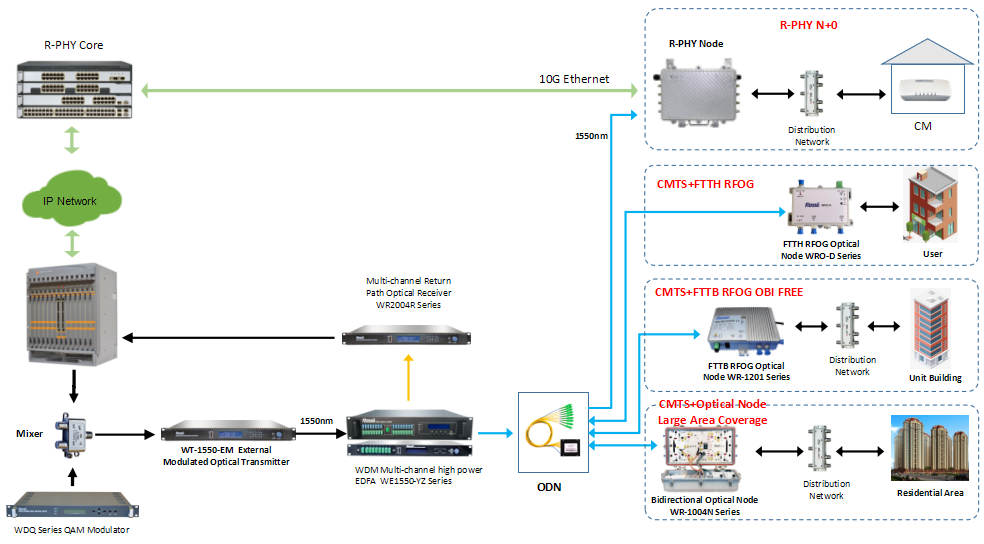
Using HFC (Hybrid Fiber Coaxial Cable Network) technology, DOCISIS network equipment and new FTTP technology such as RFoG, and ultimately with GPON, operators will be able to deploy fiber to the user's residence directly and cost-effectively .For any operator, its main advantage is that it can make full use of existing CMTS and cable modem investments and back-stage applications, while maintaining the continuity of existing video, VoIP, and ultra-wideband Internet services. Motorola not only has mature technique in HFC, DOCSIS and FTTP access network solutions, but also provides a great solution for implementing standardized RFoG solutions, which can help future GPON deployments.
RFoG allows cable operators to continue to use traditional HFC back-stage devices and applications for new FTTP deployments. With the help of RFoG, cable TV services can be transmitted through optical fiber, just as they are transmitted through coaxial cables. Cable operators can continue to use existing equipment and billing systems, CMTS platforms, front-end equipment, STB,and cable modems. A mini RFoG node can be newly installed in each user's residence to convert optical signals into electrical signals. RF network equipment remains stationary. The difference is that the optical network terminal is moved from the optical node to the user's residence.
In the future, operators will be able to use their new all-fiber access network and deploy FTTP technologies such as GPON at the appropriate time and place.
Wanlong Optoelectronics can provide RFoG optical node, FTTB OBI free RFoG node, FTTH mini RFoG node and the digital front-end equipment, downstream optical transmitter, high-power optical amplifier, multi-channel return path optical receiver and other equipments .